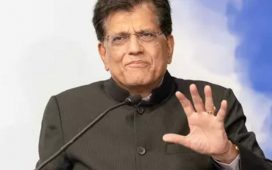They are also hoping the Indian government will ease stringent rules on manufacturing investments, amid recent efforts to reset diplomatic ties between New Delhi and Beijing.

Currently, Press Note 3 mandates government approval for any foreign direct investment (FDI) from an entity in a country sharing its land border with India, such as China.
Chinese companies have found it tough to get their investment proposals approved since a sharp worsening of bilateral ties after a border skirmish in 2020.
Two industry executives said Haier is exploring options to import moulds from China to India for its products sold in the US. These would be used for setting up new assembly lines at the Qingdao-based appliance maker’s factories in Greater Noida and Pune for air conditioners sold under the GE brand in the US, microwave ovens and other household appliances.
Haier India president Satish NS declined to comment on the specifics, but said that in the long run, the tariffs are advantageous for India, and that some alignment can be done for US manufacturing and supply chains. Haier currently exports to the US from its facilities in China and Vietnam.
Rajesh Agarwal, director at Bhagwati Products—a contract manufacturer for Oppo and Vivo smartphones—said there is more pressure on manufacturing in Vietnam and China for US markets, as compared to India.
He said the company is in talks with its partners and vendors to ascertain the possibility of shifting a portion of US production to India. Trump slapped India with a 26% reciprocal tariff, though lower than other electronics manufacturing hubs in Asia.
Trump has levied tariffs such as China’s 54%, Vietnam’s 46%, Thailand’s 36% and Taiwan’s 32%. These will come into effect from April 9.
Chinese brands like Haier, Hisense, Lenovo, Motorola, Oppo, Vivo and TCL have operations in the US, with most sourcing products from their factories or contract manufacturers in China and Vietnam. Hisense is finalising plans to import moulds for its global products from China for production in India through contract manufacturers in the second half of the year, some of which could be exported to the US, an industry executive said.
Contract manufacturer Dixon Technologies is expecting a tariff windfall for India through increased exports. The company currently makes some smartphone models for Lenovo-owned Motorola for the US market. It had an exposure of `1,700- 1,800 crore to the US in FY25.
The India chief executive of a leading Chinese electronics brand said if New Delhi relaxes FDI approvals for Chinese companies in the current scenario, it could be a gamechanger for Indian electronics manufacturing and exports.
Prime Minister Narendra Modi last month said India and China can slowly return to cooperative ties, after which Chinese president Xi Jinping said the relationship should improve and take the form of a “Dragon-Elephant tango.”
India’s electronics exports are projected to reach $37.5 billion in FY25, with $13.5 billion coming from the US. This is largely led by Apple. In FY24, India exported $10 billion worth of electronics to the US, with smartphones alone contributing $5.6 billion, accounting for 36% of India’s total smartphone exports.
India and the US are also negotiating a bilateral trade agreement which the industry believes should further reduce tariffs between the two nations.











